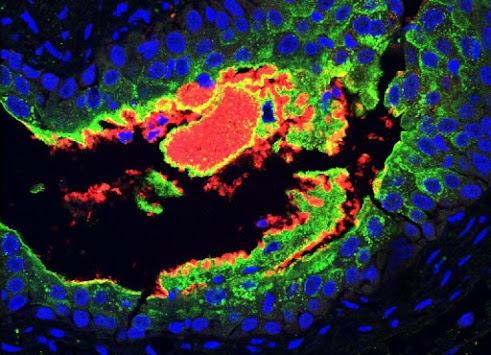Bacteria in the small intestine adapt dynamically to our nutritional state, with individual species disappearing and reappearing. Researchers at the University of Bern and University Hospital Bern have now been able to comprehensively study the bacteria of the small intestine and their unique adaptability for the first time. The findings contribute to a better understanding of intestinal diseases such as Crohn's disease or celiac disease and to the development of new therapeutic approaches.
Humans have just as many microbes in their microbiota as there are cells in the body, and most of these are in the large intestine (colon). They are an important part of our ‘digestion’ because they can harvest energy from many foods that evade our digestive enzymes. Unfortunately, whilst it is easy to collect fecal samples, it has been largely impossible to study the lower small intestine because this can only be reached during a surgical operation or after purging the intestinal contents to allow safe passage of an endoscope.
The small intestinal microbiome has remained almost “terra incognita” within the human gastrointestinal tract, despite the fact that the small intestine is essential for life and it absorbs 90% of all our calories. Researchers led by Andrew Macpherson and Bahtiyar Yilmaz from the Department for Biomedical Research at the University of Bern and the University Clinic for Visceral Surgery and Medicine at the Inselspital have now been able to examine the intestinal bacteria of the human small intestine in a simple and innovative way to show how they support the digestive process by reacting dynamically to the human nutritional status. While the gut bacteria (microbiota) of the large intestine remain relatively stable throughout life, those in the small intestine have been shown to be very unstable: they largely disappear when we fast overnight and reappear when we eat in the morning. These findings are important for a better understanding of the development of intestinal diseases such as celiac disease or Crohn's disease. The study is published in the journal Cell Host and Microbe.

.jpg)



.jpg)

.jpg)


















.jpg)
